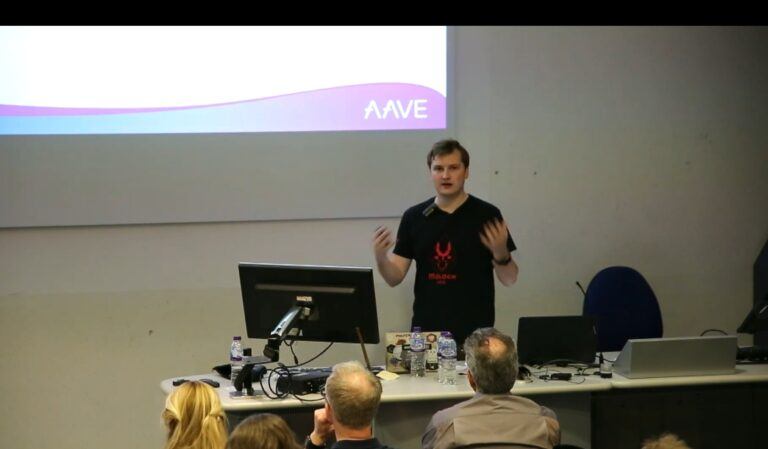Recently, the popular psuedonymous host of crypto market commentary show Coin Bureau talked about $AAVE, which is the governance token of non-custodial liquidity protocol Aave.
Aave is “a decentralised non-custodial liquidity market protocol where users can participate as depositors or borrowers.” Depositors “provide liquidity to the market to earn a passive income,” while borrowers “are able to borrow in an overcollateralised (perpetually) or undercollateralised (one-block liquidity) fashion.”
$AAVE is “used to vote and decide on the outcome of Aave Improvement Proposals (AIPs).” Furthermore, $AAVE can be “staked within the protocol Safety Module to provide security/insurance to the protocol/depositors.” Stakers “earn staking rewards and fees from the protocol.”
According to a report by The Daily Hodl, in a video released on Thursday (July 14), the popular crypto analyst told the over two million subscribers of his YouTube channel that $AAVE remains undervalued:
“Today, Aave’s ecosystem reserve only holds 1.7. million AAVE, according to Etherscan. On the demand side of this economic equation, Etherscan suggests that the number of AAVE token holders continues to rise and I suspect this is because the AAVE token sticker price has declined significantly, which has made it more appealing to investors who don’t pay attention to market cap.
“On that note, I couldn’t help but notice the comments during the last video arguing that Aave was not undervalued because its ticker price was high when AAVE was, and arguably, still is undervalued as its market cap is four times smaller than the total value locked in the Aave protocol. Always remember that it’s the market cap that matters, not the price tag.“
However, he believes that the dollar-pegged decentralized algorithmic stablecoin $GHO, which was proposed by Aave Companies on July 7, should increase demand for $AAVE:
“What does [matter] is the relative lack of demand drivers for the AAVE token. The AAVE token’s utility is currently limited to governance and staking, which offers an admittedly attractive reward relative to alternatives, albeit with slightly higher risks.
“The silver lining is that most of Aave’s supply is in circulation, meaning there isn’t much sell pressure left and this seems to be the rationale behind allocating the interest rates from the GHO stablecoin to the Aave treasury. It reduces the sell pressure for the AAVE token and ensures the protocol’s longevity.
“The introduction of the GHO stablecoin should also increase the demand for AAVE since it will make it possible for Aave stakers to mint GHO at near-zero interest rates. The caveat is that an increase in staked Aave could dilute the overall staking reward, which could weaken Aave’s second demand driver.“
As for where the $AAVE price is headed, he had this to say:
“The harsh reality is that Aave’s future improvements to demand won’t do much to change the fact that we’re currently in a crypto bear market, but it will help the Aave token rise to astronomical heights when the next bull market comes around, especially if the GHO stablecoin gains serious adoption.“









